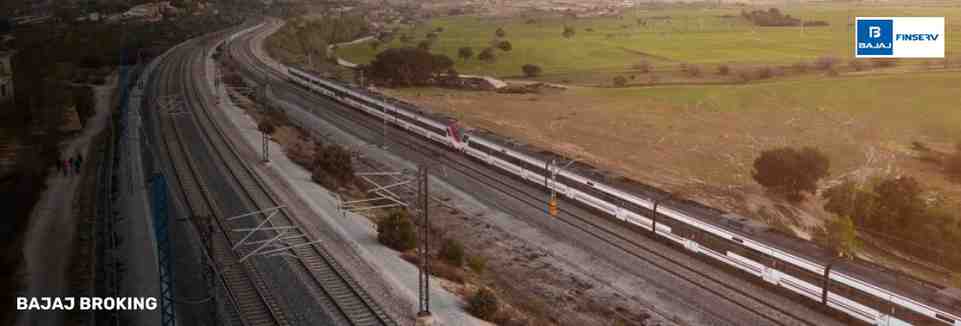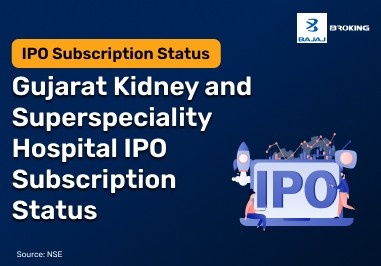Source: Screener.in/Trendlyne/Economic Times/Live Mint/Moneycontrol
Rail Vikas Nigam Limited (RVNL), incorporated in 2003 by the Government of India, works as an extended arm of the Ministry of Railways to develop and expand railway infrastructure. Its main work includes doubling of railway lines, gauge conversion, building new lines, electrification, major bridges, workshops, and production units. RVNL also shares freight revenue with Indian Railways under concession agreements. Since starting operations in 2005, RVNL has completed over 150 railway projects and has successfully used the Public-Private Partnership (PPP) model by creating several Special Purpose Vehicles (SPVs). Over the years, RVNL has expanded its role from core railway projects to a wide range of infrastructure projects both in India and abroad. Acting as an umbrella SPV, RVNL raises funds through equity, loans from banks, and financing from multilateral and bilateral agencies to execute large-scale projects, including port and hinterland connectivity, on a fast-track basis.
About RVNL
History
Rail Vikas Nigam Limited (RVNL) was established on 24 January 2003 by the Government of India, shortly after the announcement of the National Rail Vikas Yojana in December 2002. The company was specifically created to fast-track the implementation of railway infrastructure projects across the country, functioning as a specialised executing arm of the Ministry of Railways. By 2005, RVNL commenced full-fledged project execution. Over the years, its growing operational capability earned it Miniratna-I status in September 2013, providing it with greater financial flexibility for independent decision-making. In May 2023, RVNL was elevated to Navratna status, marking another significant milestone in its organisational growth and operational autonomy. The company also entered the capital markets with an initial public offering (IPO) conducted between 29 March and 3 April 2019, priced at ₹17–19 per share. The IPO was subscribed 1.78 times, raising around ₹481 crore.
(Source: company website)
Industry and Sector
RVNL operates within India’s railway infrastructure sector, an industry that plays a central role in supporting the country’s broader economic and logistical growth. Its primary mandate covers a wide spectrum of rail-based projects including track doubling, gauge conversion, and railway electrification. In addition to core rail lines, RVNL also handles the construction of metro corridors, bridges, workshops, and major production units. The company operates coach manufacturing units at Sonipat in Haryana and Latur in Maharashtra, with an upcoming wagon manufacturing facility at Kazipet in Telangana. This multi-segmented operational presence positions RVNL as one of the key players involved in expanding and modernising India’s rail network, both for passenger and freight traffic.
Key Business Areas
RVNL specialises in executing complex railway infrastructure projects, covering track doubling, new line construction, electrification, metro development, and bridge building. It also operates manufacturing units for coaches and wagons to support rolling stock needs. A key feature of its business model is the creation of Special Purpose Vehicles (SPVs) that enable the company to attract diversified funding and partnerships for large-scale projects, including port connectivity, hinterland rail corridors, and select international assignments.
(Source: Company website)
RVNL – Key Highlights
Before we proceed to details about RVNL share prices, lets have a look at a few key highlights first:
Mission & Vision
The mission of RVNL is to develop state-of-the-art rail transport infrastructure that can effectively meet India’s increasing transportation demands. The company focuses on creating modern, efficient, and sustainable rail networks to support economic growth. Its vision is to become a highly efficient provider of rail infrastructure, maintaining financial stability while adopting global construction standards and practices. Timely project execution remains central to RVNL’s long-term operational philosophy.
(Source: Company website)
Milestones and Achievements
A major milestone for RVNL was its initial public offering (IPO) in March 2019, making it the third railway PSU to go public after RITES and IRCON. It offered a 12% stake at ₹17–19 per share. The IPO was oversubscribed 1.78 times, raising ₹481 crore, and the company was listed on BSE and NSE on April 19, 2019. In January 2025, RVNL-led consortium won the ₹13,235 crore BharatNet Middle-Mile Network project in Uttar Pradesh. On 4 March 2025, RVNL secured a ₹730 crore order from Himachal Pradesh State Electricity Board for power distribution work.
Recent Developments or News
RVNL is exploring new opportunities beyond railway construction. The company is in talks with Russia’s Rosatom to set up Small Modular Reactors (SMRs), which are compact nuclear power units with a capacity of up to 300 MW. These reactors need less land and could help meet the energy needs of RVNL’s large projects, including the Rishikesh-Karnaprayag rail line. This move is part of RVNL’s plan to expand its work in the energy sector and support its growing infrastructure projects.
Financial Overview of RVNL
Revenue and Profit Trends
For the year ending March 2025, RVNL earned ₹19,923 crore in revenue, which is around 9% lower than what it earned in the previous year. Its net profit for the year also dropped by about 24.6% to ₹1,186.11 crore. In the fourth quarter of FY25, the company made ₹6,426.9 crore in revenue and ₹459 crore in profit, both about 4% lower compared to the same period last year. These figures show that while RVNL is still profitable, its earnings growth has slowed down compared to earlier years.
Key Financial Ratios
Earnings Per Share (EPS): ₹6.15 reflects the profit earned for each outstanding share during the year.
Operating Margin: 10.51% shows that RVNL retained ₹10.51 as operating profit for every ₹100 of revenue.
Net Profit Margin: 5.95% indicates that after all costs, the company converted ₹5.95 of every ₹100 in revenue into net profit.
Return on Capital Employed (ROCE): 14.12% means RVNL generated ₹14.12 in pre-tax profit for every ₹100 invested in the business.
Recent Quarterly/Annual Results
For the January–March quarter of FY 2024–25, Rail Vikas Nigam Limited (RVNL) reported a 4% year-on-year decline in net profit, which stood at ₹459 crore, compared to ₹478 crore in the same quarter last year. Revenue from core operations also decreased by 4.2% to ₹6,427 crore, down from ₹6,714 crore a year earlier. On the expense side, RVNL saw a 4.5% reduction in total costs, which came in at ₹6,120 crore. The decline in expenses was largely attributed to lower operational costs during the quarter. Despite the drop in both revenue and profit, RVNL maintained profitability, supported by effective cost control measures during the period.
RVNL Share Price Performance
Historical Share Price Trends
Since its IPO, the RVNL share price has registered a 1,173% gain over three years, climbing from around ₹32 to ₹405. As of 17th June 2025, the 50-day moving average of the RVNL share price stands at ₹393.35. Despite short-term fluctuations, the stock remains sensitive to order announcements and railway sector sentiment.
52-Week High/Low
The 52-week high saw the RVNL share price reach ₹647. The 52-week low saw the RVNL share price dip to ₹305. This reflects the volatility faced by the stock due to market conditions and the company’s overall performance.
Pros & Cons of RVNL
Pros
RVNL holds several advantages that strengthen its business stability and growth prospects:
Backed by the Government of India with Navratna PSU status, ensuring consistent project allotments and policy support.
Strong order book driven by railway expansion, electrification, metro projects, and diversification into energy infrastructure.
Access to large infrastructure contracts through SPV partnerships, enabling participation in complex, capital-intensive projects.
Manufacturing capability through coach and wagon factories, enhancing self-sufficiency in rolling stock supply.
Consistent financial performance with healthy margins, strong cash flow, and efficient capital deployment.
Cons
However, there are key risks and limitations that investors should be aware of:
High valuation multiples (P/E and P/B) make the stock sensitive to earnings disappointments.
Heavy reliance on government railway budgets and public sector capital expenditure for order inflows.
Execution risks including project delays, cost overruns, and regulatory approvals can affect timelines and margins.
Limited presence in private sector or diversified international markets compared to global infrastructure peers.
RVNL Stock Fundamentals
P/E Ratio, EPS, ROE, etc.
Parameter
| Value*
|
P/E Ratio
| 65.9
|
EPS (Earnings per Share - TTM)
| ₹6.15
|
ROE
| 14%
|
Market Capitalisation (MCap)
| ₹84,078 crore
|
*As on 17th June 2025
Shareholding Pattern
As of March 2025, the Government of India (Promoters) holds 72.84% of RVNL’s total shareholding, which has remained unchanged over the last year. Foreign Institutional Investors (FIIs) own 5.06%, slightly lower than 5.10% in December 2024. Domestic Institutional Investors (DIIs) hold 6.21%, while Mutual Funds account for 0.21%. The remaining 15.89% is held by retail and other non-institutional investors. The stable promoter holding reflects continued government control, while steady FII and DII participation shows growing institutional confidence in RVNL’s long-term growth potential.
Competitors of RVNL
Peer Comparison
Name
| CMP ₹
| P/E
| MCap ₹ Cr
| Div Yield %
| Sales ₹ Cr
| Sales Var %
| ROCE %
|
Rail Vikas Nigam (RVNL)
| 400.60
| 65.19
| 83,525.96
| 0.52
| 6,426.88
| -4.28
| 14.71
|
Larsen & Toubro
| 3,622.95
| 32.64
| 4,98,285.83
| 0.94
| 74,392.28
| 10.90
| 14.49
|
NBCC
| 120.05
| 53.09
| 32,413.50
| 0.43
| 4,642.55
| 16.17
| 33.48
|
IRB Infra Devl.
| 49.30
| 29.85
| 29,772.26
| 0.60
| 2,149.24
| 4.27
| 7.82
|
KEC International
| 889.95
| 41.51
| 23,690.48
| 0.44
| 6,872.12
| 11.47
| 16.00
|
Kalpataru Projects
| 1,205.05
| 36.29
| 20,579.01
| 0.76
| 7,066.77
| 18.35
| 14.06
|
Ircon International
| 199.75
| 25.77
| 18,786.74
| 1.52
| 3,412.07
| -9.90
| 12.10
|
Market Positioning
Functioning as the executing arm of the Ministry of Railways, RVNL is positioned uniquely in the infrastructure landscape, leveraging a hybrid model of direct and SPV-based project execution—efficiently bridging planning and implementation.
Future Outlook for RVNL
Growth Opportunities
RVNL continues to strengthen its growth prospects with a robust order book of ₹970–980 billion at the end of FY25. Around ₹470 billion comes from core railway projects, while the rest is from diversified sectors, ensuring revenue visibility for at least the next four years. In FY25, RVNL secured ₹140 billion in new orders. The company has expanded beyond railways, winning a ₹5.5 billion highway project from NHAI. It also a ₹1.4 billion contract from Southern Railway. With the possibility of the company expanding into metro, road, renewable, and even hybrid-nuclear infrastructure projects, RVNL share prices may see future growth opportunities in the upcoming months.
Risks and Challenges
RVNL’s business depends heavily on government spending for railway and infrastructure projects. If government budgets are reduced or delayed, RVNL’s order flow and revenue may slow down. The company also faces risks of project delays due to land acquisition issues, regulatory approvals, or unexpected cost increases. Since many of its projects are long-term, any changes in raw material prices or interest rates can affect profits. In addition, RVNL’s high stock price valuation means any drop in earnings or new orders may lead to sharp stock price corrections.
How to Track RVNL’s Share Price?
You can track RVNL’s share price using financial news websites, stock market apps, or brokerage platforms that offer live updates. These sources provide real-time RVNL share price updates, historical trends, and market insights. Investors can also follow regular stock market reports and company announcements that may impact the share price. Monitoring factors like market capitalisation, daily trading volumes, and price changes helps investors understand market sentiment. Additionally, official filings, NSE and BSE updates, and RVNL’s investor relations page offer accurate and timely information on company performance.














